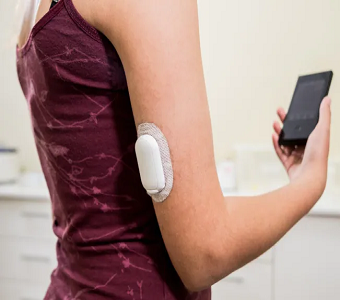Dermira (DERM) is expected to read out pivotal Phase 3 data for their topical acne drug before the end of Q1'18. Instead of picking a side for this binary readout, we think using an options spread is a better way to capture upside.
We Expect DERM To Make Large Move By Mid March
On October 5th, 2017, Dermira announced the completion of their Phase 3 acne enrollment. The study’s endpoints look at the quality/quantity of acne lesion counts 3-months post treatment with olumacostat glasaretil. Assuming data analysis takes an additional month, we anticipate results to be announced sometime in early February. To be on the safe side and account for possible delays, we are playing the March options, which expire March 16th.
Both Primary Endpoints Must Be Met To Be Considered a Success
DERM’s Phase 3 will be broken down into 2 identical trials of 744 patients and 759 patients. Both trials will present the following primary endpoints:
- absolute reduction in both inflammatory & non-inflammatory lesion counts
- % of patients showing IGA improvements

Historically, the harder endpoint in acne trials has been the IGA – which stands for “Investigator’s Global Assessment” (#2 endpoint above). IGA is the investigator’s assessment of acne severity in each patient, based on a 5-point scale ranging from 0 (representing clear skin) to 4 (representing severe acne).
To prove successful, Dermira must meet the above endpoints for both trials.
Dermira’s Phase 2B Data Showed Promise
Dermira’s olumacostat glasaretil showed a statistically significant change in the number of inflammatory & non-inflammatory lesions (below), hitting the primary endpoint.

However, Dermira’s Phase 3 study will include modifications which add some uncertainty to the outcome in Q1 2018. These include:
- Phase 3 dose is 5% BID (twice a day), which hasn’t been tested before. This adds doubt, but is also in-between the 4% & 7.5%. Both these Phase 2 arms showed statistically significant results so a dose in-between should yield similar results.
- Phase 3 vehicle arm will use BID dosing (twice a day) rather than the combined BID+QD (once a day) dosing that the Phase 2 vehicle used. Theoretically, twice a day dosing should increase the Phase 3 vehicle arm lesion count decline and thus increase the baseline. This should make the hurdle more difficult for Dermira in Phase 3.
In 2/3 Phase 2 arms, Dermira showed a statistically significant IGA response (see image below).

Phase 3 is powered to show a 10% delta over vehicle. Therefore, if the Phase 3 5% BID arm has an IGA response rate that is 10% higher than vehicle, Dermira will meet the endpoint. In 2/3 arms shown above, this was the case. In the 7.5% QD arm (middle bar), the delta was 9.4%.
Data Readout Could Yield 4 Scenarios
Dermira is targeting a prescription topical acne market which is about $2.5B in size. This market has been dominated by Allergan & Valeant. Combined their brands take up nearly 60% of market share. However, many of these dominant brands like Aczone and Ziana are facing generic competition resulting in revenue declines for both Allergan & Valeant.
In addition to being the highest valued candidate in Dermira’s pipeline, the acne market dynamics are also contributing to the importance of this Phase 3 study. Thus, we think DERM will see a huge swing in price movement, one way or the other. Below are the 4 scenarios that we believe could arise and where we model the [DERM] stock moving as a result.
Scenario #1 (BEST): Hit both primary endpoints (both inflammatory/non-inflammatory & IGA)
In this case, Dermira would warrant a broad label approval and have a potential drug with peak sales of ~$500M sales (20% market share). This would make Dermira an instant takeout target as olumacostat glasaretil could fill Allergan’s & Valeant’s revenue void. We model price to jump over $60/share.
Scenario #2 (BASE): Hits IGA and 1 of inflammatory / non-inflammatory endpoints
With this outcome, we believe Dermira would still have an approvable drug, but with a restricted label. As a result, we project sales to be in the ~$300M range; valuing shares above $45.
Scenario #3 (WORST): Misses IGA endpoint, but hits both inflammatory / non-inflammatory endpoint
This outcome would likely mean Dermira’s olumacostat glasaretil is not approvable. The stock would fall to net cash + value of pipeline. In our view, this is in the $12/share range.
Dermira has year-end 2017 cash of $540.0 million and $279M in convertible debt. This leaves net cash at $260M. The company also has a June 30, 2018 PDUFA for their candidate glycopyrronium tosylate, targeting excessive sweating. We place a value of $200M on this candidate, bringing total value (net cash and pipeline combined but excluding acne), to $460M (or about $12/share).
Scenario #4 (WORST): Hits IGA but misses both inflammatory & non-inflammatory endpoint
Similar to Scenario #3, we expect DERM to fall to net cash + pipeline value ($12/share range).
In short, for Dermira’s Phase 3 acne to be considered a success, the company must:
- Hit IGA endpoint
- Hit at least 1 of inflammatory or non-inflammatory endpoints
If this happens, we think the stock will trade above $45. If not, we expect it falls to $12/share.
How We Are Trading DERM's Upcoming Catalyst
- Buy March 16, 2018 $40 Call for $2.50
- Buy March 16, 2018 $17.50 Put for $2.00
With this strategy we have an outflow of $4.50 in total. The trade will be unprofitable if DERM trades between $13 – $44.50. If it trades below $13 (55% decline from current price) or above $44.50 (60% rise from current price), we are profitable.

Access This Content Now
Sign Up Now!




